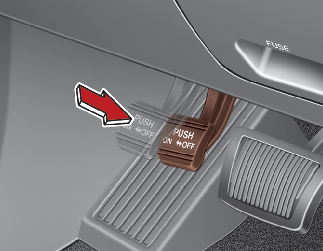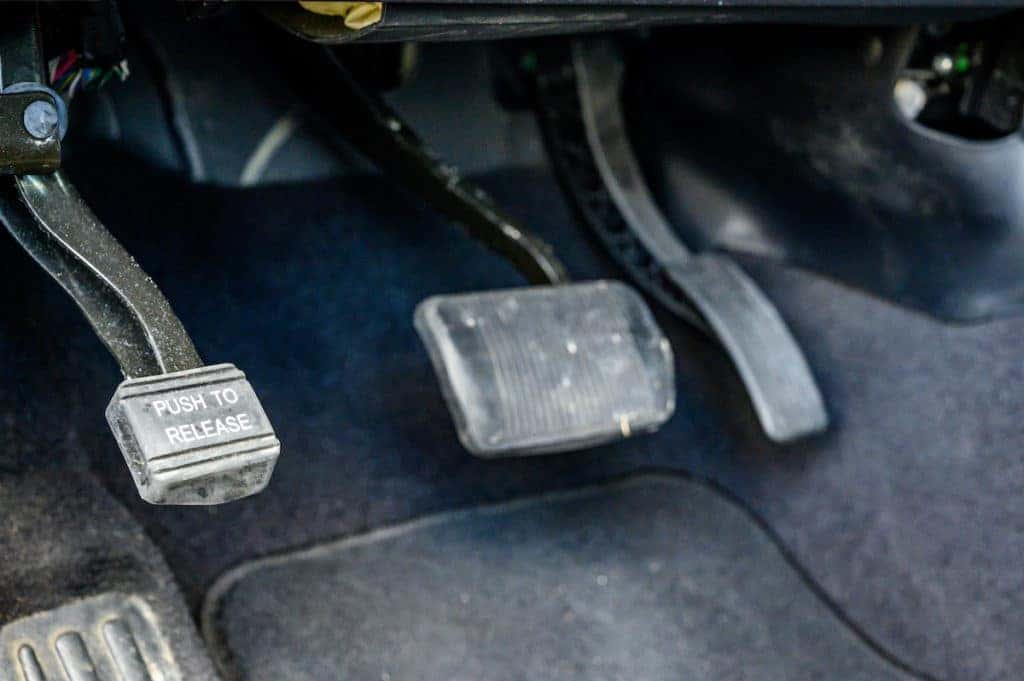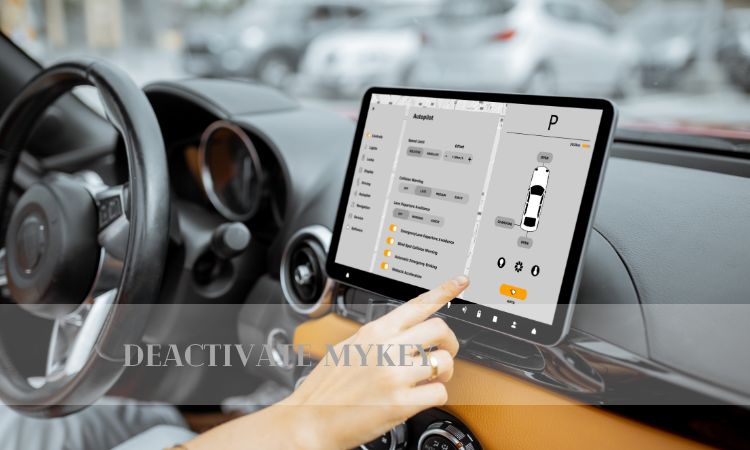How to Know If Emergency Brake is on
To know if the emergency brake is on, check if the warning light is illuminated and if the car moves freely. Having your emergency brake engaged without realizing it can lead to dangerous driving situations.
It’s important to understand the indicators that signal whether the emergency brake is engaged or not. By being aware of these signs and taking prompt action, you can avoid potential accidents and ensure a safe driving experience. We will discuss how to quickly determine if your emergency brake is on, as well as provide guidance on what to do if you find it engaged.
Stay informed and drive safely by following these simple steps to check your emergency brake status.

Credit: www.kia.com
Signs Of An Engaged Emergency Brake
When driving, it’s crucial to be aware of your emergency brake’s status to ensure safe and efficient operation. Recognizing the signs of an engaged emergency brake can prevent potential hazards and damage to your vehicle. Understanding the indicators and resistance associated with an engaged emergency brake is essential for maintaining vehicle safety. Let’s explore the visible indicators and unusual resistance while driving that signify your emergency brake is engaged.
Visible Indicator
If your emergency brake is engaged, there may be a visible indicator on your dashboard, typically in the form of a red light bearing the letters “BRAKE” or an icon representing a parking brake.
Unusual Resistance While Driving
Another sign that the emergency brake is engaged may be the feeling of unusual resistance while attempting to drive. When the brake is activated, the vehicle may drag or exhibit difficulty moving forward, even when the transmission is in gear.
Effects Of Engaging The Emergency Brake
The Emergency Brake, when engaged unintentionally, can have several adverse effects on your vehicle. It is crucial to be aware of these effects to avoid potential safety hazards and damage to your car.
Reduced Speed Or Difficulty In Accelerating
Engaging the Emergency Brake accidentally can cause a decrease in speed or make it hard to accelerate properly. This happens because the brake system is active, leading to resistance against forward movement.
Overheating Of Brake Components
Leaving the Emergency Brake engaged unknowingly can result in overheating of brake components. The constant friction between the brake pads and rotors can generate excessive heat, potentially damaging the brake system.
Steps To Check If Emergency Brake Is Engaged
To ensure your safety and prevent potential accidents, it’s crucial to regularly check if your emergency brake is engaged correctly. Follow these simple steps to perform a quick inspection and verify if the emergency brake is on.
Visual Inspection Of The Brake Lever Or Pedal
- Check the position of the brake lever or pedal visually.
- Ensure the brake lever is lowered or the pedal is in its resting position.
- Look for any indication that the brake is engaged, such as the lever being raised.
Testing The Resistance Of The Brake Lever Or Pedal
- Apply gentle pressure to the brake lever or pedal.
- Notice if there is resistance when attempting to press down the lever or pedal.
- A lack of movement or excessive resistance may indicate the emergency brake is engaged.
By following these steps and performing a visual inspection along with testing the resistance of the brake lever or pedal, you can quickly determine whether the emergency brake is engaged. Regularly inspecting your emergency brake can help ensure your safety while driving.

Credit: www.toyotaofclermont.com
Common Mistakes That Can Lead To The Emergency Brake Being Engaged
Common Mistakes that Can Lead to the Emergency Brake Being Engaged
Forgetting To Release The Brake After Use
One common mistake people make is forgetting to release the emergency brake after using it. This can happen when a driver is in a rush to get going and simply forgets to disengage the brake. It’s essential to develop a habit of double-checking that the emergency brake is fully released before driving off to avoid potential safety hazards and unnecessary wear and tear on the vehicle.
Accidentally Engaging The Brake While Exiting The Vehicle
Another mistake that happens is accidentally engaging the emergency brake while exiting the vehicle. This can occur when the driver bumps the brake pedal as they are getting out of the car or perhaps resting their foot on the pedal without realizing it. Being mindful of foot placement when entering and exiting the vehicle can help prevent this from happening.
Importance Of Regularly Checking The Emergency Brake
The emergency brake, also known as the parking brake, is an essential component of every vehicle. Regularly checking the emergency brake is crucial for several reasons. By performing this simple task, you can prevent unintended vehicle movement and ensure the efficiency of the brake system.
Preventing Unintended Vehicle Movement
Regularly checking the emergency brake can prevent unintended vehicle movement, which can lead to dangerous situations. Whether you are parked on a steep slope or a flat road, it’s important to ensure that the emergency brake is engaged before you leave your vehicle unattended. This small act can save you from potential accidents and damages.
Maintaining The Efficiency Of The Brake System
In addition to preventing unintended vehicle movement, regularly checking the emergency brake is essential in maintaining the efficiency of the brake system. Over time, the emergency brake can become worn out or lose its effectiveness. By examining the emergency brake regularly, you can identify any issues and take the necessary steps to prevent a potential brake failure.
Furthermore, regularly checking the emergency brake also allows you to spot any signs of damage or wear on the brake pads. This proactive approach helps in identifying potential brake system problems early on, preventing them from worsening and becoming more expensive to repair.
To ensure that your emergency brake is functioning properly, follow these simple steps:
- Before getting out of your vehicle, ensure it is in park or neutral (for manual transmission).
- Engage the foot brake fully.
- Locate the lever or pedal for the emergency brake.
- Gently pull up the lever or press down the pedal until you feel resistance.
- Verify that the emergency brake is properly engaged by attempting to move the vehicle slightly. It should not budge if the brake is working correctly.
Regularly checking the emergency brake should be a part of your routine vehicle maintenance. By preventing unintended vehicle movement and maintaining the efficiency of the brake system, you can drive confidently and ensure the safety of yourself and others on the road.

Credit: m.youtube.com
Frequently Asked Questions Of How To Know If Emergency Brake Is On
How Do You Know If Your Parking Brake Is On?
To know if your parking brake is on, check for signs like difficulty in moving the vehicle, a warning light on the dashboard, or an unusual noise when driving. Ensure the brake lever or pedal is fully released and consult the owner’s manual for specific instructions tailored to your vehicle.
What Happens If You Accidentally Drive With The Emergency Brake On?
Accidentally driving with the emergency brake on can cause the brake pads to overheat and wear out faster. It can also lead to reduced fuel efficiency and cause damage to the brake system over time. Always make sure to release the emergency brake before driving.
How Is The Emergency Brake Activated?
To activate the emergency brake, pull up the lever near the driver’s seat in most vehicles.
Is Your Emergency Brake Supposed To Be Up Or Down?
The emergency brake should be up when engaged to activate it and down when released.
How Do I Know If The Emergency Brake Is On?
If the car doesn’t move when you release the brake pedal, it’s likely the emergency brake is engaged.
What Are The Signs Of The Emergency Brake Being On?
You may notice that the car feels sluggish, jerks when driving, or emits a burning smell.
Can The Emergency Brake Cause Damage To The Car?
Yes, if left engaged while driving, the emergency brake can overheat and damage the braking system.
Conclusion
Checking if the emergency brake is on is crucial for safe driving. By following the steps outlined in this blog post, you can avoid potential accidents and damage to your vehicle. It’s important to stay vigilant and regularly maintain your car’s emergency brake to ensure it functions properly.
Always be mindful of this important safety feature when operating your vehicle.



